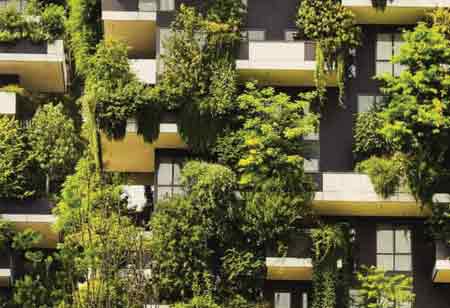In an exclusive interview with Real Estate Business Review Europe, Lindfors shares his valuable insights on creating a sustainable, enjoyable, and convenient urban environment.
As the planning director for the City of Tampere, please give a brief overview of your professional journey.
My professional background is in city planning. I have a foundation in engineering expertise in logistical management and have studied business management and industrial engineering. This unique perspective aids in comprehensively understanding and guiding the city’s growth.
Before my role in Tampere, I served the city of Lahti. Initially, I was responsible for transportation system planning and public transportation, followed by my tenure as a City Engineer. My responsibilities included public area planning, construction, and maintenance.
This diverse experience has been instrumental in my current position as the planning director of Tampere, Finland’s second-largest and fastest-growing city. I oversee the city’s comprehensive planning department, which includes strategic and detailed urban planning, transportation system design, park and stormwater management, building enforcement, and real estate matters.
Our department comprises approximately 140 specialists contributing to the city’s development, now supporting nearly 260,000 residents. Remarkably, Tampere experienced a population increase of over 6,000 individuals last year, surpassing our annual growth target of 3,000. This rapid expansion underscores the importance of the work to create a sustainable, enjoyable, and convenient urban environment.
What challenges do you face while leading the city of Tampere’s planning department?
“Planning a city is about finding synergies where a single measure can address multiple challenges, thereby maximizing efficiency and impact.”
In Finland, particularly in Tampere, the housing sector is facing challenges. High-interest rates have reduced apartment construction, which is problematic for a city experiencing rapid growth. People are hesitant to purchase homes due to the increased mortgage costs. This increase is linked to the fluctuating interest rate, which is largely influenced by the European Central Bank’s policies.
Despite these hurdles, we seek strategies to motivate construction firms to initiate new housing projects. However, the slowdown has predominantly affected rental developments. This is particularly impactful in Finland, where most residents prefer homeownership over renting.
Moreover, Tampere is committed to sustainability and aims to achieve carbon neutrality by 2030. This goal requires diligently managing carbon emissions while adapting to climate change. Variable weather patterns, ranging from heavy snowfall to warmer, rainy conditions, pose additional challenges, such as managing stormwater floods. We are exploring ways to mitigate these issues, including more greenery in urban planning to help absorb excess water. These efforts are part of our broader initiative to ensure Tampere’s development is sustainable and resilient.
In addition, the current economic climate, compounded by the war in Ukraine, has tightened our budget, necessitating more innovative and cost-effective solutions to urban development challenges. Enhancing biodiversity within the city is a priority, and we are exploring creative ways to integrate nature into the urban fabric without compromising financial resources.
Our economy previously allowed straightforward initiatives like tree planting to enhance aesthetics. Now, we must consider multifunctional strategies that address stormwater management, snow accumulation, and the vitality of city industries. This holistic approach seeks to beautify the city, ensure its resilience against climate change, and support local businesses.
Our current constraints allow us to reassess and refine our urban planning methods. We are looking for synergies where a single measure can address multiple challenges, maximizing efficiency and impact. Our goal remains to build an attractive, thriving, sustainable, and adaptable city for the needs of the future.
What initiatives have you taken to address these constraints?
The tramway system in Tampere is a crucial element in the urban development strategy, particularly given the city’s unique geographical constraints. Situated on a narrow strip of land between two lakes, Tampere faces spatial limitations that challenge the expansion of housing and transportation infrastructure.
The light rail system has been operational for two years and has been under construction for approximately seven years. This rail system serves as a key solution to these challenges. It connects the city center with the southern part of Tampere, including the technical university area, home to around 26,000 residents. We are extending the tramway to link the eastern and western parts of the city, directly addressing the growth-related traffic demands.
This tramway, which runs on clean electricity, supports our goal of carbon neutrality and promotes denser urban development along its route. It offers residents improved transportation options, reducing their reliance on personal vehicles.
Furthermore, we rapidly enhance our public transport network, upgrade bus services, and expand regional train connections. These improvements are crucial for areas beyond the tramway’s reach. They ensure comprehensive and sustainable mobility options for all Tampere residents.
What specific technology or trend in the real estate business sector piques your interest?
I am particularly excited about advancements in carbon-neutral building materials and circular economic solutions. One innovative project involves reusing prefabricated concrete elements from older structures. This initiative presents an opportunity to reduce waste and extend the lifecycle of building materials. We are exploring various ways to repurpose these components from buildings that no longer meet requirements and transform them for use in new, modern construction.
Additionally, we are increasing the use of timber in construction to lower carbon emissions further. The growing popularity of zero-carbon concrete products also offers promising prospects for our environmental goals. These efforts are crucial as we strive to make Tampere a model for resilience and sustainability in Finland and globally.
What advice would you give to your peers and the budding entrepreneurs entering the sector?
Innovation and courage are the cornerstones of successful urban planning. My advice is to be bold and be the first to embrace new ideas while recognizing the enduring value of proven technologies. For instance, the tramway system, once considered outdated, is now experiencing resurgence in Tampere and other cities, demonstrating its lasting relevance. Similarly, it is crucial to look for fresh solutions, simultaneously drawing from historical successes, and adapting them to contemporary needs. Ultimately, daring to think outside the box and pioneering new approaches drives progress.



